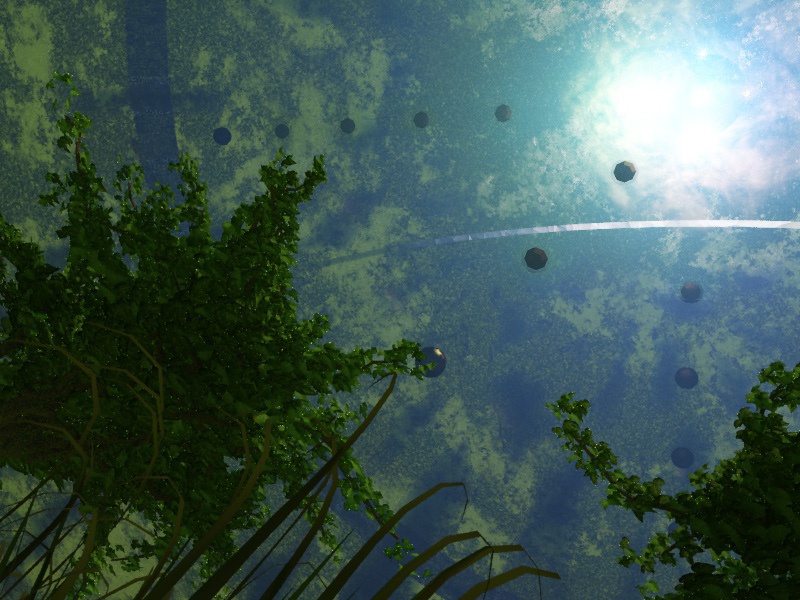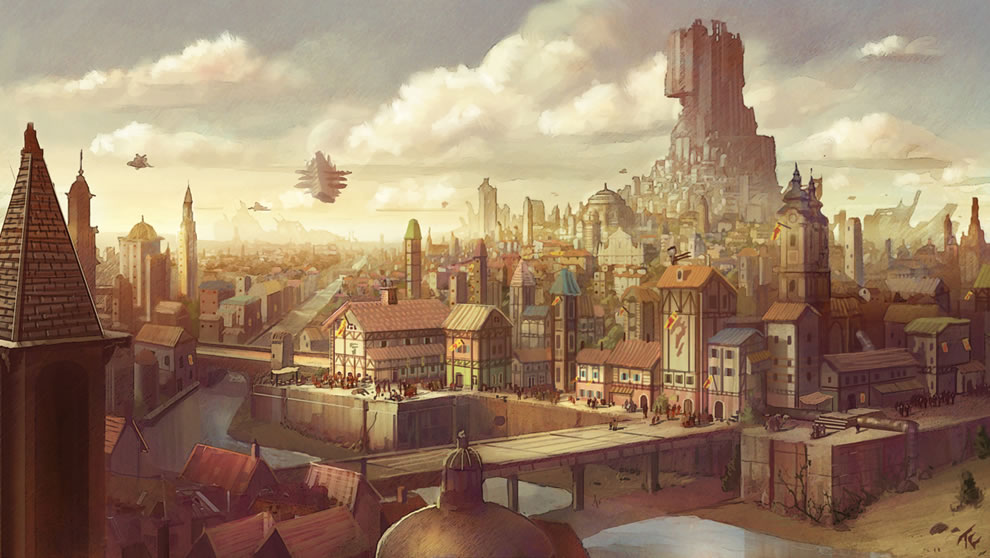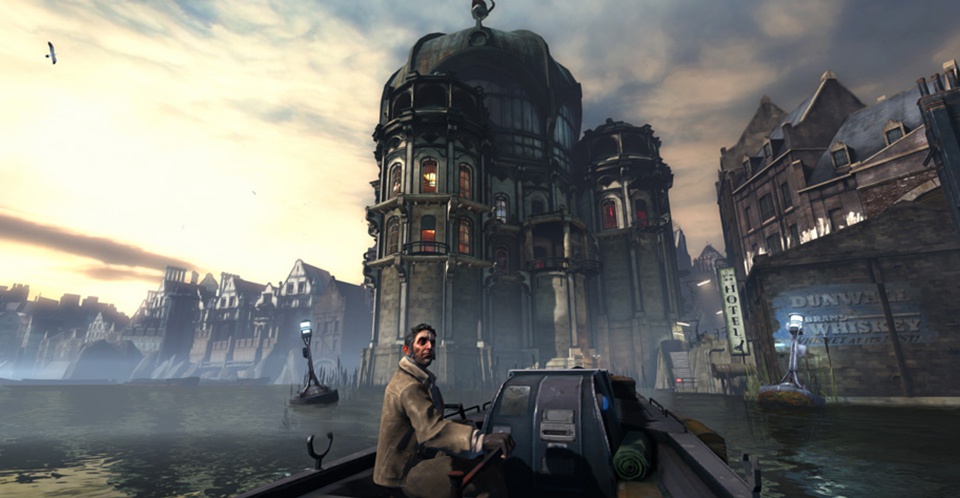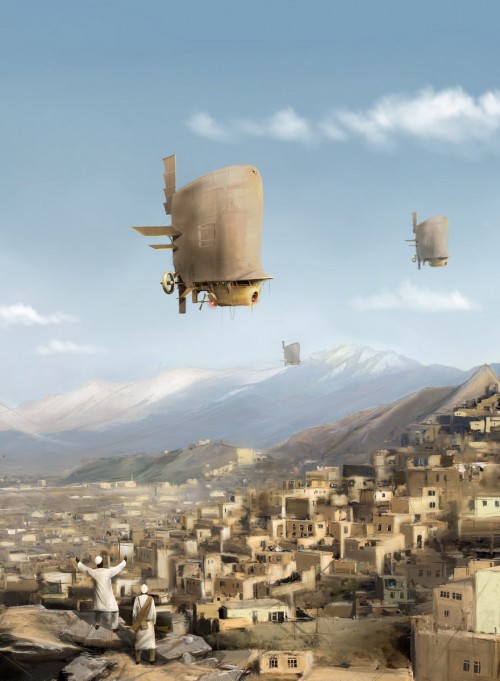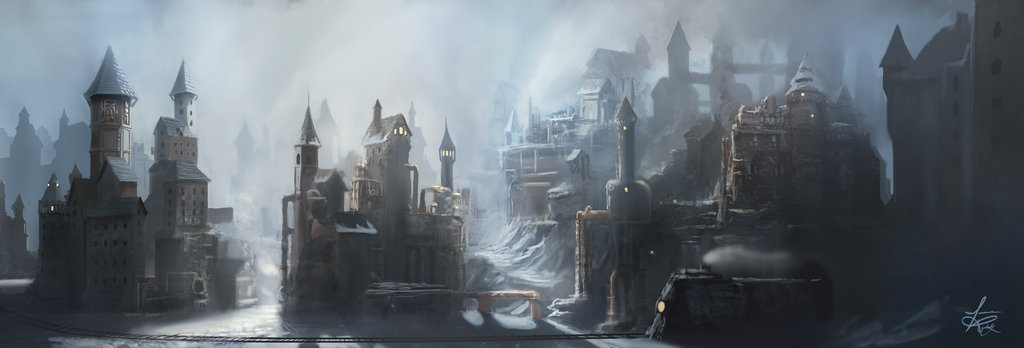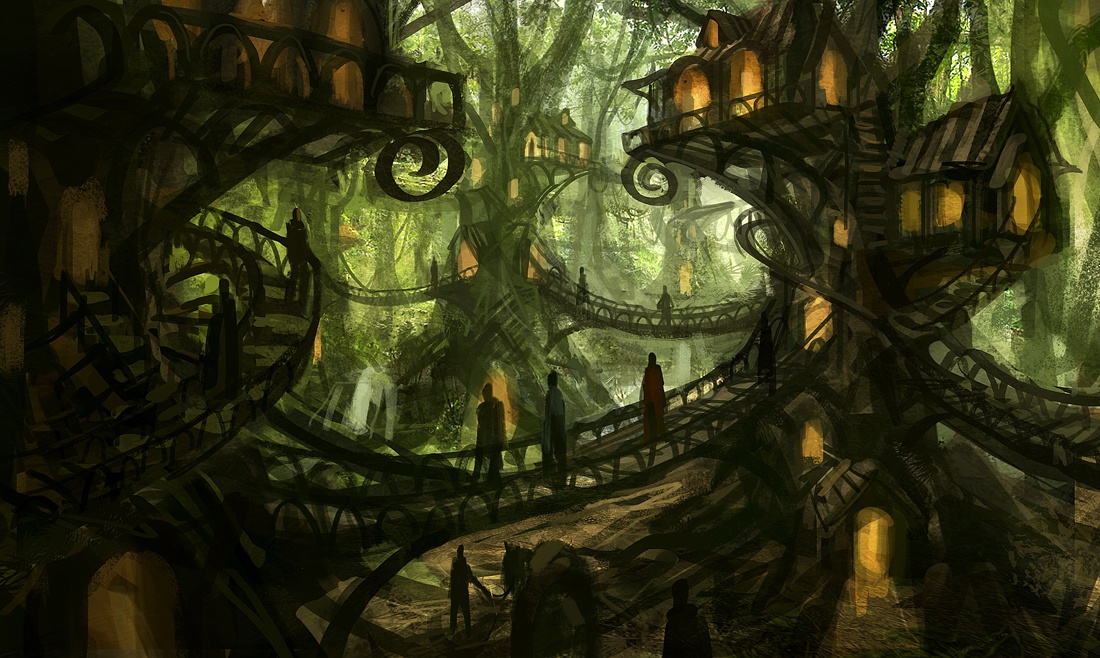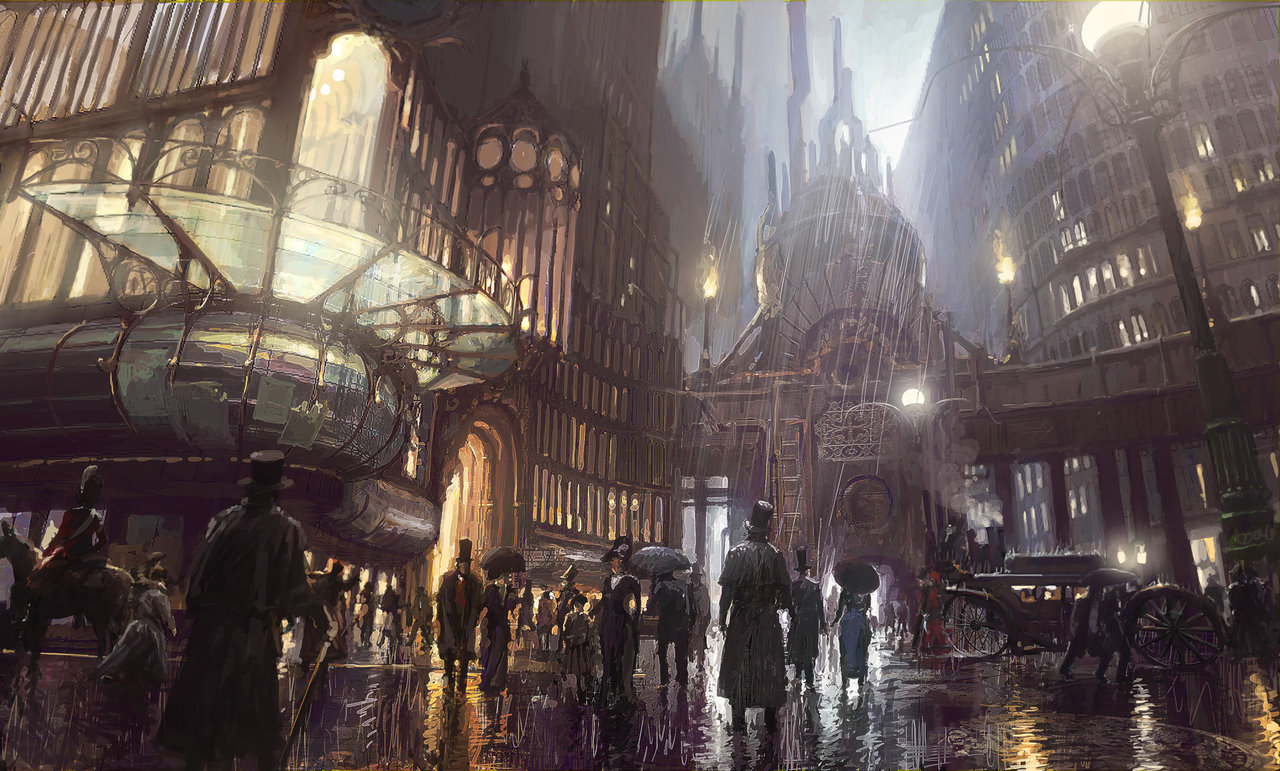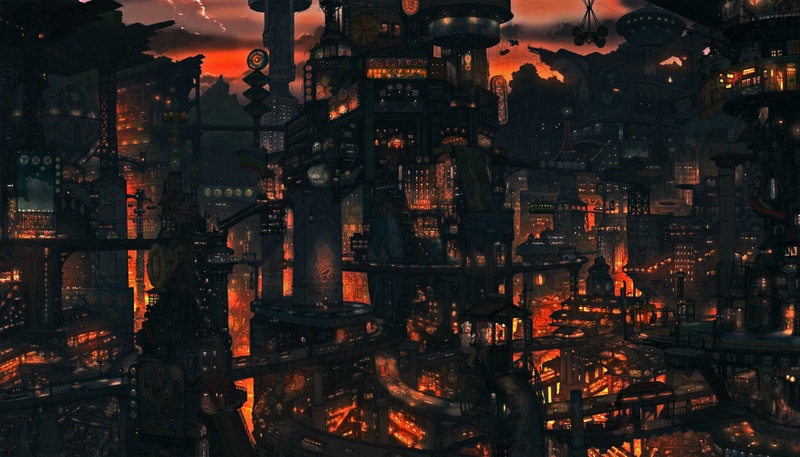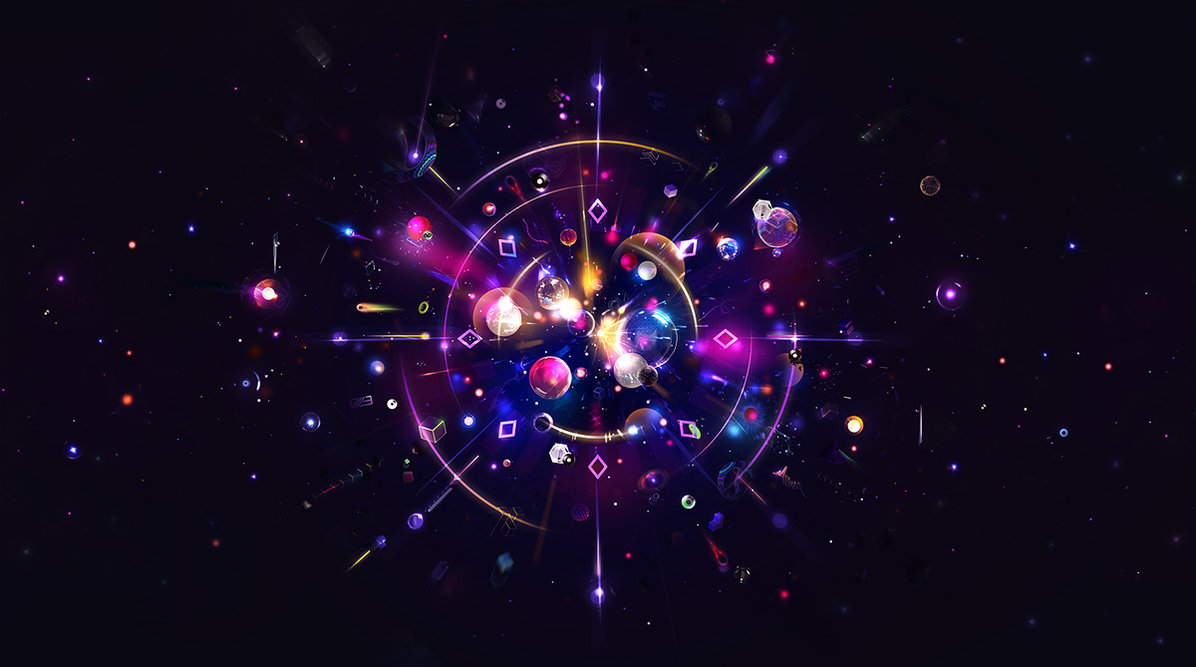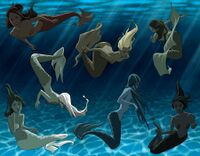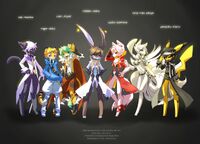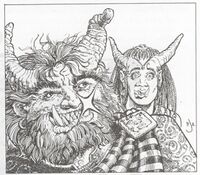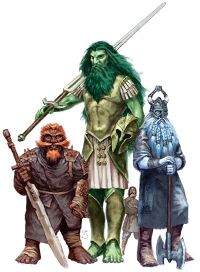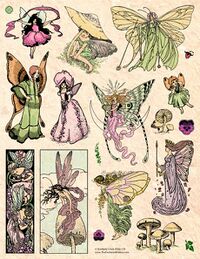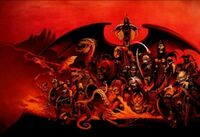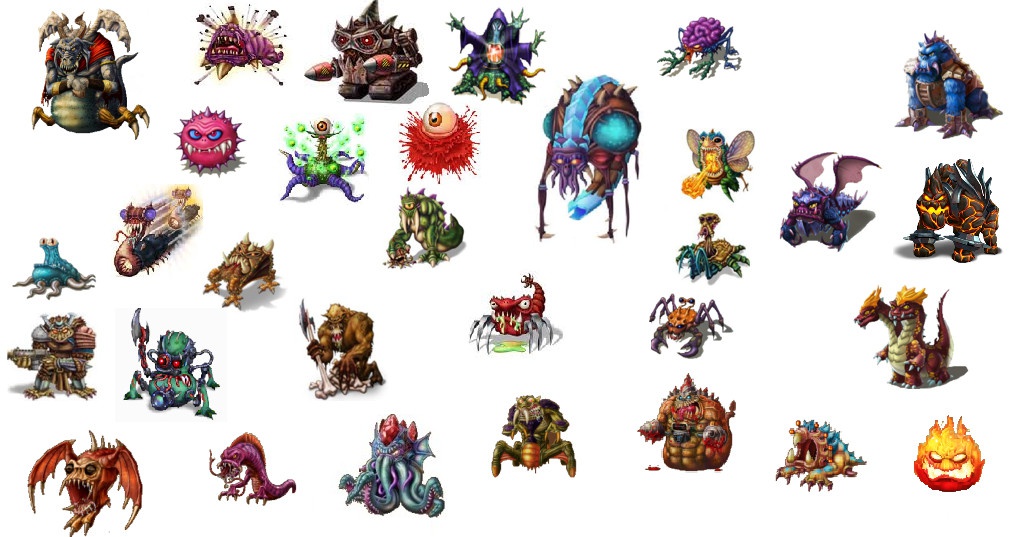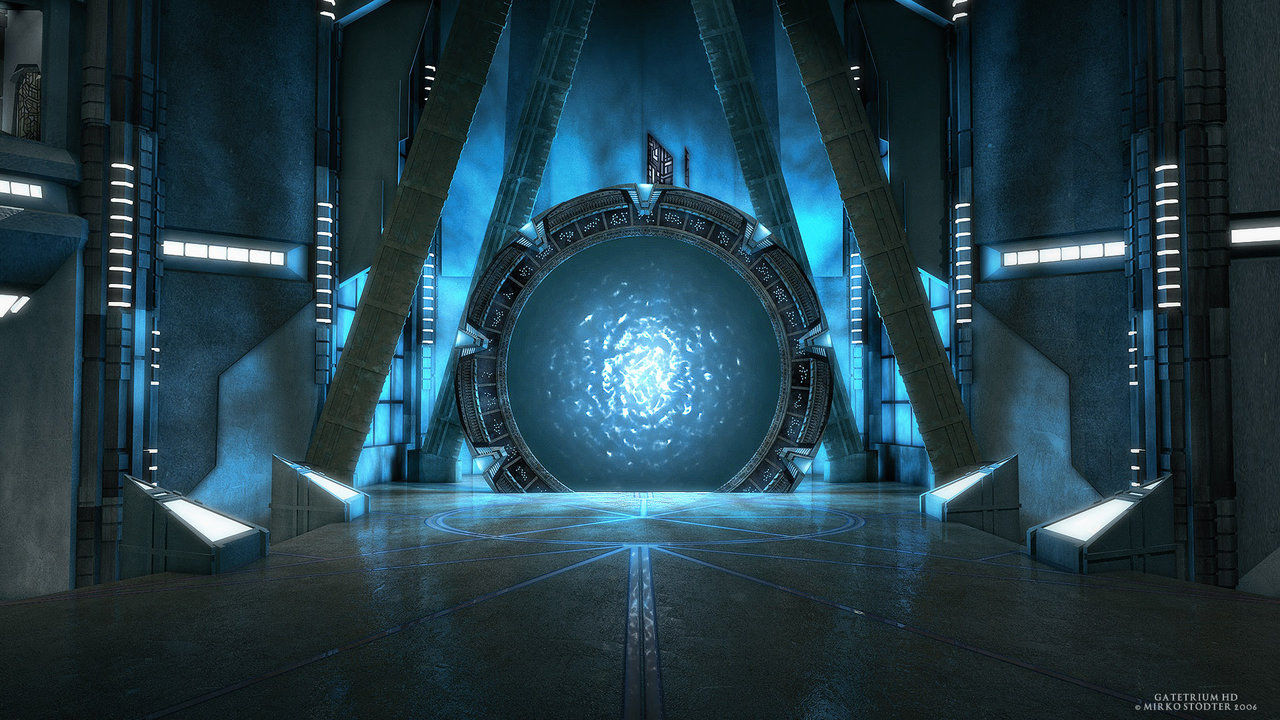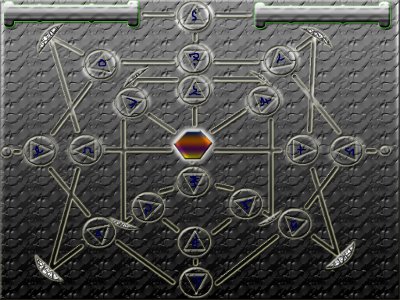Magical Realm Cyoa/Diaspora: Difference between revisions
1d4chan>Kestrel404 No edit summary |
1d4chan>Kestrel404 |
||
| Line 192: | Line 192: | ||
== '''The Portals''' == | == '''The Portals''' == | ||
[[File:Diaspora_portal.jpg]] | |||
The portals which connect the worlds are only slightly more numerous than the worlds themselves. These gateways between realms are a fundamental element of the realms to which they are linked. They cannot be moved, destroyed, or unlinked from the realms they are home to. Not so much physical artifacts as fundamental aspects of reality, these portals are about as eternal and integral as a thing can be. | |||
For all that, they are fairly obstinate and inconvenient devices. To operate a portal, one must get to the lowest edge of one to access the control panel. This panel consists of a pad with 17 characters plus a multicolored central button and a pair of green buttons. To operate the portal, one enters a sequence of exactly seven different characters and presses the green button. Entering more or less than seven characters will clear the device. Pressing the multicolored button will clear the device. Entering seven characters that do not correspond to another gate will clear the device. | |||
[[File:Diaspora_portal_panel.jpg]] | |||
Fortunately, the gate address of each gate is clearly displayed on the panel - so you will always know the address for your home. | |||
Once a good sequence has been entered, the portal will attempt to connect to another gate. If that gate is in use, no portal will form. If the target portal was accessed from a different portal in the past ten minutes, no portal will form. If the gate that is being used was used in the last ten minutes, no portal will form. | |||
Once a portal does form, it remains open for exactly one hundred seconds. Anything that is not all the way through the portal is left partially in one location, and partially another - this is generally fatal, and at the very least uncomfortable. | |||
Overall, portal travel is regarded has finicky and hazardous - but it is also the only really usable means of getting from one realm to another. It is possible, just, for a single person to transport themselves to one of the realms. But due to the constant fluctuation of the realms, the arrival point cannot be determined in advance. This is regardless of skill, power, capability or what have you. The metaphysics of why this are true are hotly debated, but generally the magic inherent in the realms themselves prevent pinpoint teleportation between them. The result of this is that if two people teleport together from one realm to another, they are likely to end up tens of thousands of miles apart, and neither anywhere near their destinations. This effect also prevents further teleportation into or out of a hundred-mile-radius area of the teleporter's destination, as well as their starting point if it was within Diaspora, which lasts for one hour. | |||
Most troublesome of all, it has been determined that, no matter where the teleporter was intending to land, they invariably end up in some form of dungeon, pit, or other hole which is difficult to escape from. Fortunately, even the most junior of mages capable of the feat of teleporting between realms has reported that they were up to the task of escape, though they all found it difficult. Of course, that was only the ones who made it back... | |||
== '''The Theme''' == | == '''The Theme''' == | ||
== '''Magic, Science, Skills''' == | == '''Magic, Science, Skills''' == | ||
Revision as of 16:04, 3 August 2014
Diaspora
Realm Name: Diaspora
Realm Wizard: Xanatos
Population: 250 Million humans within the primary cities and surrounding areas. Additional settlements are believed to be spread throughout the various realms or deep in the wilds, but there is no data on the numbers available.
General Description: Numerous dyson-sphere-like constructs linked by magical portals which connect in a manner similar to Stargate. Most areas are comprised of a single or small number of similar/linked biomes. All areas are infested by monsters, dungeons and hazards of all forms.
The Build
Complications - Notorious! [125]
Demiplanes - Area Increase 8 [110]
Planar Features - Gateways 2 [107]
Planar Features - Division [105]
Planar Features - Assimilation [102]
Population - Population Increase 6 [90]
Inhabitants - Extrahuman Population [86]
Inhabitants - Metahuman Population [82]
Technology - Technology Upgrade 2 [80]
Magic - Magical Upgrade 3 [74]
Society - Public Education [73]
Society - University [71]
Society - Industrial [68]
Society - Mystical [64]
Society - Technomagic [59]
Society - Sanitation [58]
Society - Healthy [57]
Culture - Intellectual [56]
Culture - Gaming [55]
Culture - Occult [54]
Culture - Sexual [53]
Environment - Cosmic Adjustment [51]
Environment - Landscape Adjustment [48]
Environment - Fertile [47]
Environment - Rich [45]
Environment - Exceptional Materials [42]
Environment - Magical Phenomena [39]
Environment - Flora & Fauna 3 [34]
Adventure - Dungeons 3 [29]
Adventure - Afterlife [26]
Adventure - Malice [25]
Adventure - Theme [21]
Personal - Spirit Walk [18]
Personal - Shape Shift 2 [13]
Powers - Levitation [12]
Powers - Enchanting [10]
Ascendance - Divine Spark [0]
History and Overview
In the times of myth and legend, Diaspora was a single realm. A magical plane of vast landmasses, huge seas, flying islands that followed the tradewinds, and a single star which never rose or fell in the sky, but always burned brightly directly above, no matter where one lived. In those long-lost times, the world was a peaceful place, with prosperity and happiness everywhere. Magic was known to exist, but there was no great need to explore the intricacies of spells and enchantments, and even less need to go beyond basic agriculture and metalworking. The land was fertile and rich and ripe with all the best things. There was one people who were masters of the land, and all was well.
Then, came the breaking. Great rifts appeared in the land and sea, swallowing whole nations and sundering continents. Trade became impossible, and the great floating isles were tethered for fear they would slip through these great rents in the world. The many scholars of the time gathered and discussed, but could find nothing in the histories or the world, nor could they understand what was happening with their meagre sciences. The greatest mages of the time cast their strongest divinations, and learned only that the world was ending due to the actions of one being - a semi-divine entity called Xanatos.
The great realm of Diaspora was torn apart, the peoples of the realm sundered as surely as the lands. Each land closed off from the others, most of them trapping a piece of the once great sun, and getting some portion of the rich resources as well as some portion of the people. In the end seven great realms were formed, with a hundred smaller, lesser worlds interspersed among these. Each of these pocket realms was connected to the others by a powerful artifice called a Portal, and each realm got at least one of these portals. Though magical travel is possible without the use of the portals, it is exceptionally difficult.
But this was not the end of the Diasporan people's troubles. Suddenly, the once peaceful land became harsh and dangerous. The tamed beasts of the wild lands became feral and fearsome. The plants became vicious, often poisonous or barbed or capable of lashing out. The weather of the spheres was no longer mild, and even the land itself twisted into mazes, mountains and other difficult terrains. The whole world had turned against the Diasporan peoples, forcing the once peaceful and calm natives to struggle for survival, and struggle hard.
Millennia have passed, and the world has become more harsh, not less. The people have adapted to their environment, becoming strong and fierce, intelligent and crafty. In each realm, the people are subtly different - travel between the realms happens infrequently, and the pockets of people have started to become racially divergent, each group adapting to the unique conditions of their own realm. The worlds have also adapted to the people, becoming more dangerous as the people grow in strength. In many of the scattered realms, the people have been hunted to extinction by fierce predators or have died off to natural hazards. In these pocket worlds, nature runs wild in the ruins of abandoned and forgotten cities and great beasts hoard the last remnants and treasures of lost peoples.
While some of the Diasporan people are cut off from the main populated worlds, the majority live in or near one of the Seven Cities, each in one of the greater realms, which are connected by fiercely guarded portals in those realms. The Seven Cities trade with each other, and the lesser realms, and grow wealthy and powerful from this trade. The founding of these cities is considered the beginning of modern history, and saw the beginning of the slow rise of magical, technological and technomagical progress.
For most of the people of Diaspora, the world is a mildly dangerous place, equally full or wonder and challenge, a place where they can grow strong and learn to thrive despite adversity. Yet every one of them, in some deep part of their heart, yearns for the peace and gentle carelessness of the times of myth. And so each one curses the name of Xanatos.
The Realms
There are seven greater realms, and roughly two hundred lesser realms. Each of these pocket realms has effectively the same cosmology as all the others, but differences in details result in wildly diverse conditions and biomes.
Each realm is effectively a Dyson Sphere - a shell of land, like a hollow planet, with a sun in the center and habitable land on the inner surface of the bubble. However, not every realm is a perfect sphere - many of the realms are oblate spheroids (slightly squashed balls), pseudo-cylinders with different levels of curvature, or occasionally even hourglass or stranger shapes. Just as importantly, different realms have different amounts of resources in them - some realms have larger 'suns' resulting in higher temperatures, some have more water or less earth, and some are even nearly-airless. While it is possible to equalize most of these elements through the portals, the limitations on the use of portals makes it impractical to fix a wildly divergent realm's issues in any reasonable time frame (see portals, below).
The Seven Greater Realms are the largest, and each is roughly half the volume of the earth's sun. The majority of that is open air, though each of these realms has a very thick 'outer' layer suitable for deep mining, and capable of supporting very extensive oceans. The total surface area of any given greater realm is comparable to what Jupiter would have were it not a gas giant - many thousand times more than the paltry land area of Earth. However, the vast majority of that area is trackless wilderness, uninhabited except by feral beasts and fearsome vegetation, pocked with deep caverns full of dangerous creatures and legendary lost treasures. Only the area near the Portal within a Greater Realm has any significant population - though there are scattered outposts and 'lost' tribes in every greater realm.
The Seven Realms are each named after one of the ancient, pre-scattering gods. It is unknown if those gods still live within the realms, if they have since left their broken domain, or if the wicked Xanatos slew them, but all that remains of those great beings are their names and a few legends.
The most prosperous of the realms, with the fairest climate and the largest population, is called Dagos, after the god of gentle storms. It is a nearly perfect sphere, with just the right level of light and heat to grow crops all year round, and enough rainfall to keep fields watered without extensive irrigation. It rains lightly for eight hours out of every twenty four, like clockwork, giving the realm the closest equivalent to a normal day/night cycle as exists within the realms. The farmers of Dagos are among the safest and best protected individuals in the realms, as their grain and produce provides the bulk of food to all seven of the great cities. The greatest danger near Dagos-Ka, the great city of Dagos, are the Rain Drakes - great flying lizards who infest the enormous flying stone islands that wander through the skies of that realm. Whenever one of these flying isles passes over the farmland around Dagos-Ka, hunting parties are called in from different realms to fend off Rain Drake attacks until it is past.
The next most prominent realm is Vander, named for the goddess of calm seas. Though the seas of Vander are legendary for the storms they produce, the island-specked realm is little more than a single vast ocean with the occasional land mass. The great city of Vander-Ka resides on the coast of the largest known land mass, with the city's portal actually residing in a shallow bay. To use this portal, the weather-mages and engimancers use huge water pumps to lower the water level of the bay until the portal is uncovered. Vander-Ka is famous for exporting their finely-built ships, seafood of all kinds, and water to those realms that need to import it.
While it is the least populous of the Seven Realms, Kloth - named for the god of the tended fire - is probably the wealthiest per person. This realm is nearly the mirror opposite of Vander, with little to no surface water anywhere in the realm. The occasional oasis in the vast desert of Kloth is generally treated as an invaluable treasure, its location jealously guarded by the nomadic tribe that discovers it. Despite its inhospitable climate, Kloth is home to the richest and most accessible veins of precious ores - gold, adamntium, silver, mythril, orichalcum and numerous rare earths. These materials are refined by expert smiths and craftsmages and traded to the other realms by the expert merchants of Kloth-Ka for the numerous resources required for survival in the parched realm of Kloth.
While not so harsh of climate as Kloth, the barren and frozen wastes of Pergos - named for the goddess of gentle breezes - are home to some of the hardiest souls in all the realms. The entire realm seems to be covered in enormous mountain ranges, scrubby tundra, and endlessly blowing artic winds. Despite the harshness of this environment, some of the largest and meanest fauna of the realms makes its home in this realm - providing excellent hunting and great challenges to any who would venture into its limitless wilds. Numerous small flying islets which are common to the skies of the realm are used as the foundations for large flying sailing ships, harnessing the ever-howling winds of the realm for fast travel over the mostly-barren wilderness. Not that this is a safe form of travel - the skies are full of Screaming Drakes, Furies and Rocs in addition to the larger flying landmasses pushed to great speeds by the blowing winds. Despite the many dangers, there are few who are friendlier and none who are tougher than the warriors of Pergos-Ka.
The most dangerous and secretive of the great realms is of course Spenet. Named for the god of shadows and hidden places, Spenet is the realm with the smallest 'great' city. Indeed, the entire city is housed within the branches of a single tree. Of course, that tree's branches span a distance of forty miles in nearly every direction from the massive portal embedded in its central upper trunk, but very few of the surrounding trees - each just as large - are even fully explored, let alone inhabited. None venture down to the floor of the world-forest of Spenet, as the ground of that plane is teeming with the most vicious critters in all the realms. These creatures will invade the realm on a seasonal basis, with the occasional surprise attack thrown in just to keep things interesting. The people who live there are ornery, territorial, and quick to resort to violence. A common saying of the Seven Cities is, "Be wary of your purse with a Kloth-Ka merchant, but be polite for sake of your life with a Spenet-Ka toddler."
Paradoxically, the people of Kiroth - named for the goddess of healing balms - are both the kindest and most feared. Because Kiroth has the mildest and least pleasant weather of all the realms - overcast skies with a continuous heavy misting which is not quite rain but which never stops - its people tend to be either very calm and collected, or else completely irrational and prone to sudden violence. Some are both. But that is not what makes the people of Kiroth feared - no, the weather on Kiroth has made the entire plane a single continuous swamp/rainforest, with the most diverse and intricate ecosystem of any realm. It is speculated that there are more kinds of poison in a single acre of Kiroth jungle than exist naturally in all of the other realms combined. Because of this, the average Kiroth-Ka citizen is better trained in medicine, chemistry, and general biology than most specialized healers from other realms. And on top of that, Kiroth-Ka has the single largest guild hall of practising necromancers of any realm - and is the only realm to actively welcome the oft-disliked school of magic. The healers and necromancers of Kiroth-Ka work closely together to manufacture the most potent drugs and medicines of any realm.
Lastly, there is the sunless realm of Tender, named for the god of peaceful death. This realm is perhaps unique in all the realms for having no visible sun without becoming a frozen no-man's land. It is speculated by scholars that Tender does have a sun, but that it is dark - like a lit coal covered in ash, generating heat but no light. The lands of Tender are still and mostly parched, but certainly not devoid of life - indeed, many of the strangest and most fearsome looking creatures in the realms hail from the darkness of Tender. Swarms of eyeless insects, numerous specialized fungi, enormous flying creatures that navigate by sound and many other strange things live there. The city of Tender-Ka is also known as the City of the Damned, because its inhabitants are the outcasts and criminals of the other realms, exiled there as punishments for the most terrible crimes. Doomed never to see the sun again, they must eke out lives in a place lit mostly by burning manure and bioluminescent fungi, though they will often purchase various types of magical illumination in trade for live samples of the plane's various strange creatures or bushels of the tastier kinds of mushrooms grown on the unlit farms.
Beyond the seven great realms are the numerous minor realms. These vary greatly in size, shape and condition, from mostly-liveable spheres the size of a medium gas giant like Neptune, to smallish balls no larger than Mars. The conditions within each realm is unique, and often quite extreme, and no two are entirely identical in disposition of climate and life. No one has gotten a precise count of these as yet, but the number is at least one hundred and sixty, and new portal addresses are discovered each year. Perhaps half of those are known to be inhabited, with the total populous of the realms last summed up as over two hundred and fifty million. For the most part, despite the vast land areas involved, the realms can be considered as a collection of loosely aligned city-states, with the major cities always vying for power and dominance, and the smaller ones either trying to grow or struggling to survive. Those towns and villages that do not have easy access to their realm's portal - which is most of them - tend to be the worst off, since those portals tend to attract strong guardian creatures who must be killed or driven off to get even a small number of people or goods through. Overall, life in one of the minor realms is hard.
The People
The vast majority of Diasporans live in one of the Seven Great Cities, described above. These are civilized places, well defended and kept free of monsters. While Demihumans are welcome, they are often treated as second-class citizens and as such many choose to live elsewhere, or at the outskirts of the great cities. There are also the group known as the 'Noven'. It is generally hard to tell one of the People from a Noven physically, but mentally there is not a great deal of comparison. A Noven would be considered a natural genius on earth, and many of the greatest geniuses born as Diasporans are thought to be Noven. While there is some small prejudice for the Noven as a whole among The People, on an individual level they are generally welcomed and well liked, since they tend to be the most skilled individuals in any society. Still, Noven are considered a rarity, because they are nearly always born in one of the lesser realms, or so far into the deep wilds that it takes them half their life to get to civilization.
It is believed that there are significant populations of humans, demihumans and noven in the wilds of all of the realms, even the seven greater realms. This is difficult to prove however, due to the hostile nature of the wilds and the monsters that tend to infest portals in the lesser realms.
Demihumans are divided into seven major races, and innumerable minor ones which are considered variations. The major races and their most distinctive features are as follows:
Monsters include many intelligent races as well, but unfortunately the monstrous races are too far removed from humanity to interact peacefully. While some Demihuman races have an easier time getting along with some Monsters, on the whole Monsters do not associate with beings outside their own or similar forms. For example, a Manticore tribe might be willing to negotiate and trade with a group of Griffons or even some Demons, but they would be far more likely to tear apart a group of Demihumans or Beholders who ventured into their territory. Similarly the Giants of the Realms tend to be on good terms with Ogres and some kinds of Trolls, but they feel they are inherently superior to most other kinds of people and as such tend to be vicious and cruel to mere 'human' scale people.
Of course, not all Monsters are intelligent - most of the beasts of the wild, such as Drakes and Dire Wolves, are just animals with extreme biologies and some innate magical ability. Some monsters are significantly more powerful than the more common members of their race. Such monsters tend to be just below the cusp of true sentience, exceptionally clever and capable, and far more dangerous because of this. These monsters are referred to as 'elites', in the case of intelligent monsters, or 'great' for the non-sentient forms. The monsters that guard portals are almost always of the 'elite' variety.
The Portals
The portals which connect the worlds are only slightly more numerous than the worlds themselves. These gateways between realms are a fundamental element of the realms to which they are linked. They cannot be moved, destroyed, or unlinked from the realms they are home to. Not so much physical artifacts as fundamental aspects of reality, these portals are about as eternal and integral as a thing can be.
For all that, they are fairly obstinate and inconvenient devices. To operate a portal, one must get to the lowest edge of one to access the control panel. This panel consists of a pad with 17 characters plus a multicolored central button and a pair of green buttons. To operate the portal, one enters a sequence of exactly seven different characters and presses the green button. Entering more or less than seven characters will clear the device. Pressing the multicolored button will clear the device. Entering seven characters that do not correspond to another gate will clear the device.
Fortunately, the gate address of each gate is clearly displayed on the panel - so you will always know the address for your home.
Once a good sequence has been entered, the portal will attempt to connect to another gate. If that gate is in use, no portal will form. If the target portal was accessed from a different portal in the past ten minutes, no portal will form. If the gate that is being used was used in the last ten minutes, no portal will form.
Once a portal does form, it remains open for exactly one hundred seconds. Anything that is not all the way through the portal is left partially in one location, and partially another - this is generally fatal, and at the very least uncomfortable.
Overall, portal travel is regarded has finicky and hazardous - but it is also the only really usable means of getting from one realm to another. It is possible, just, for a single person to transport themselves to one of the realms. But due to the constant fluctuation of the realms, the arrival point cannot be determined in advance. This is regardless of skill, power, capability or what have you. The metaphysics of why this are true are hotly debated, but generally the magic inherent in the realms themselves prevent pinpoint teleportation between them. The result of this is that if two people teleport together from one realm to another, they are likely to end up tens of thousands of miles apart, and neither anywhere near their destinations. This effect also prevents further teleportation into or out of a hundred-mile-radius area of the teleporter's destination, as well as their starting point if it was within Diaspora, which lasts for one hour.
Most troublesome of all, it has been determined that, no matter where the teleporter was intending to land, they invariably end up in some form of dungeon, pit, or other hole which is difficult to escape from. Fortunately, even the most junior of mages capable of the feat of teleporting between realms has reported that they were up to the task of escape, though they all found it difficult. Of course, that was only the ones who made it back...
